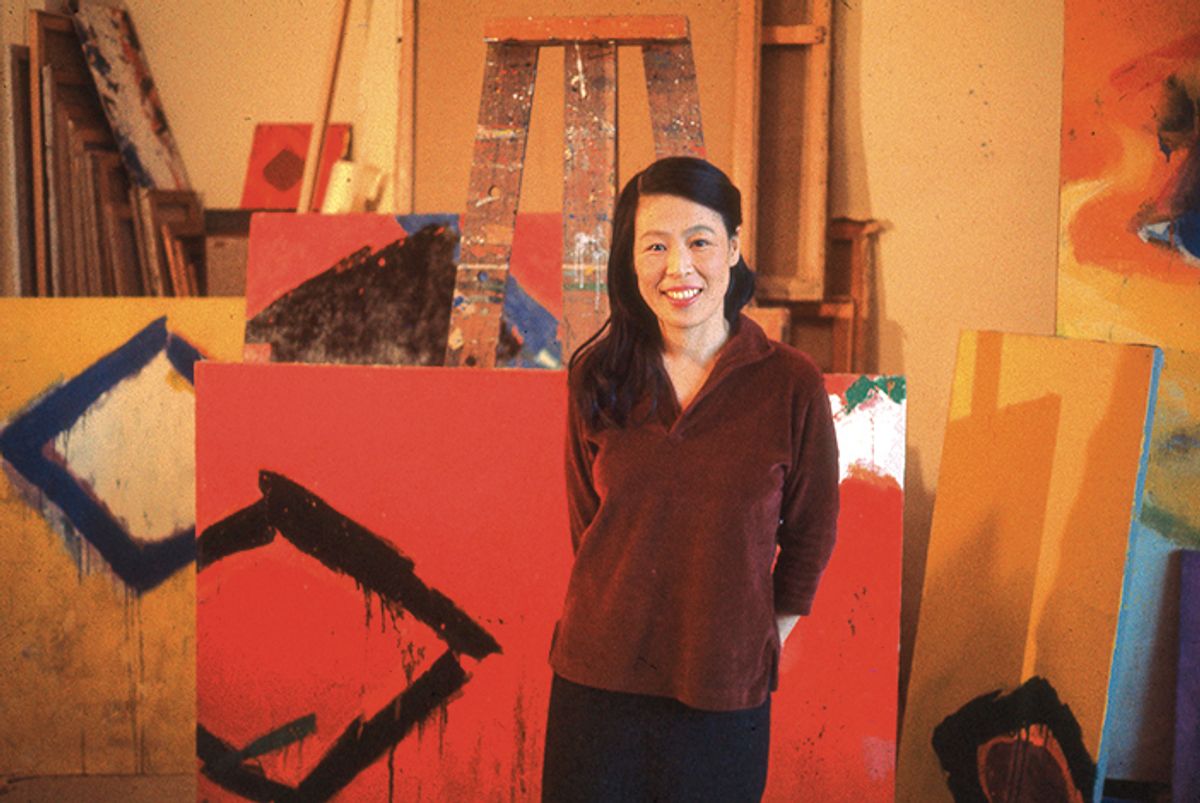New York’s Hotel Chelsea is no stranger to the art world. From Patti Smith to Jackson Pollock, countless creatives have visited and taken up residence in the bohemian establishment throughout its colourful history, sometimes paying their bills with art. This month, the hotel is opening Teruko, a Japanese restaurant from the chef Tadashi Ono inspired by one of its former residents: the late artist Teruko Yokoi.
Born in 1924 in Tsushima, Japan, Yokoi was known for her mixed-media paintings that blend American Modern abstraction with aspects of traditional Japanese figuration, theatre and poetry. The Japanese-born Swiss artist, who died in 2020, resided in the Hotel Chelsea from 1958 to 1961 with her then-husband, the artist Sam Francis. In addition to borrowing the painter’s name, the new restaurant, which is scheduled to open in mid-May, will feature eight works by Yokoi that the hotel recently acquired.
“I personally responded to her art instantly and started learning about her life and work,” says Sean MacPherson, the Hotel Chelsea’s co-owner. “The more I got to know about her life at Chelsea, the more it felt natural to acquire Teruko paintings for the restaurant and name it after her.”
According to Yokoi’s family, the hotel played an important role in the artist’s life. “It was a defining point in her career,” says Tai Wallace, Yokoi and Francis’s grandson. “She produced some of her most important early works at the Hotel Chelsea. While turbulent at times in her personal relationships, it placed her at the epicentre of the second-wave Abstract Expressionist movement in New York.”
The couple’s daughter Kayo Malik, who was born in the hotel, agrees. “I have no doubt that Teruko would be overjoyed,” she says. “I can imagine her sitting in the restaurant like a queen, surrounded by her beloved paintings, watching and enjoying the scene.”
After leaving the hotel, Yokoi and Francis moved to Paris for a year before separating. Yokoi went on to settle in Switzerland and continued working as an artist, earning international acclaim. Her work has been included in nearly 100 exhibitions, including at the Kunsthalle Basel, Kunstmuseum Bern and Marlborough Gallery.
Coinciding with the opening of the restaurant, Yokoi is the subject of a solo show at Hollis Taggart, Noh Theater (until 14 June). The exhibition features more than 20 works Yokoi made from the late 1950s to the early 2000s and shows how she drew inspiration from the Noh theatre tradition. A form of Japanese dance-drama that dates to the 14th century, Noh often includes stylised masks to convey gestures.
“Noh is best known for its refined stillness and emotional restraint, which mirror the dualities present in Yokoi’s paintings,” says Severin Delfs, director of development at Hollis Taggart. “As a cultural ambassador living abroad, Yokoi drew heavily from Japanese influences such as calligraphy, traditional music, the tea ceremony and, most importantly in the context of the exhibition’s theme and work, Noh, to maintain a connection to her heritage.
Several paintings in the show include collaged tea paper, which is used in Japanese tea ceremonies and made from the bark of mulberry trees. This material was also used for the ephemera of Noh theatre, such as the libretti.
Yokoi’s family notes parallels between the artist’s life and Noh performance. She adapted as she moved across several countries and cities, including Japan, Paris, New York, San Francisco and Switzerland. She also faced an art world that was not supportive of women artists, in addition to broader struggles facing immigrants abroad. “World war, geopolitical conflict and cold war sabre rattling, suspicion of immigrants, occupied Japan and racial tensions defined the time,” Wallace says. “The metaphor of the mask represents her journey.”
- Teruko Yokoi, Noh Theater, Hollis Taggart, until 14 June


